‘I walk: I prefer walking’
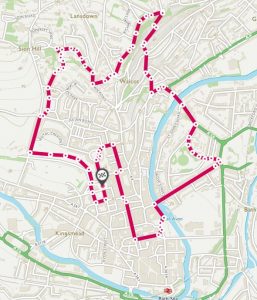
KEY DATA
- Terrain: Pavements, hilly bits
- Starting point: 13 Queen Square, BA1 2HJ
- Distance: 6.4 km (4 miles)
- Walking time: 1 hr 56 mins
- Map: can also be found online at https://osmaps.ordnancesurvey.co.uk/route/10535476/Bath-Literary-Ramble
- Facilities: Everything
JANE AUSTEN (1775-1818)
Jane Austen visited Bath in 1797 and again in 1799 before moving there in 1801 when her father retired from the ministry. Jane’s mother’s relatives had family connections to Bath, and it was there that Jane’s parents had first met. They lived a well to do existence until her father’s death in 1805 which profoundly altered their financial situation; and they left in 1806, returning to the Hampshire countryside where Jane had grown up.
The two novels mainly set in Bath represent Jane’s very different experiences of the city: Northanger Abbey (begun 1798) introduces an innocent young girl, Catherine Morland, enjoying a holiday there in the late 1790s, whereas in Persuasion (begun in 1815) world-weary Anne Elliot feels imprisoned there. One loves the social scene, the other is jaded by it. The character of Bath seems to change between the two books, from a place of fun and frivolity to one that is enervating.
‘They arrived at Bath. Catherine was all eager delight – her eyes were here, there, everywhere, as they approached its fine and striking environs, and afterwards drove through those streets which conducted them to the hotel. She was come to be happy, and she felt happy already.’
Anne’s arrival in Persuasion contrasts markedly: ‘There had been three alternatives, London, Bath, or another house in the country. All Anne’s wishes had been for the latter… She disliked Bath, and did not think it agreed with her – and Bath was to be her home.’
This change in tone reflects Jane’s own journey during this period, from an impressionable twenty-something-year-old expected to marry well to a spinster for whom the course of true love had not run smoothly and who had lost her father and fallen on straitened times.
There are differing views about how much Jane enjoyed her time in the city, given that she was at heart a country girl – but of one thing we can be sure, she loved walking. For Jane and for her characters, walking is a habitual part of daily life. In letters written in 1805 and in 1806, she writes ‘we do nothing but walk about’ and ‘we walk a good deal’. She characterises herself as a ‘desperate’ walker, and this disposition is shared by her heroines. Persuasion’s Mary Musgrove, for example, protests that she is ‘very fond of a long walk’.
A well-to-do woman walking in public space was to some extent radical for the era when ladies mainly walked around the gravel paths of their country retreats or travelled by carriage. Walking articulates both physical and mental freedom.
Walking also provides shared seclusion for crucial conversations, especially between two single people where meeting up in any other space could be difficult, so it provided an important plot device.
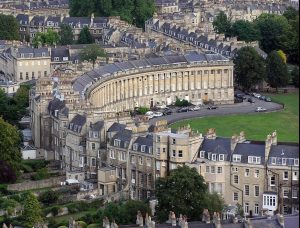 Bath is in many ways a stage set for Jane’s characters, with Pulteney St, Milson St and the Assembly Rooms the main ‘runways’. Jane doesn’t change the names of any of the streets or places as many other novelists do. The squares, circuses and raised pavements in Bath were in effect open-air stages, where people promenaded, flirted and gossiped. And the architecture of the era was in many ways just like a stage set, with carefully choreographed facades created by the main architect, but the houses behind built by individual builders in any shape they wished (just look at an aerial view of the Royal Crescent).
Bath is in many ways a stage set for Jane’s characters, with Pulteney St, Milson St and the Assembly Rooms the main ‘runways’. Jane doesn’t change the names of any of the streets or places as many other novelists do. The squares, circuses and raised pavements in Bath were in effect open-air stages, where people promenaded, flirted and gossiped. And the architecture of the era was in many ways just like a stage set, with carefully choreographed facades created by the main architect, but the houses behind built by individual builders in any shape they wished (just look at an aerial view of the Royal Crescent).
THE WALK
A good place to start is at the Jane Austen Centre on Gay Street. We are drawn into the Georgian period straight away, with staff dressed as Jane Austen characters: we are greeted at the door by Captain Wentworth from Persuasion.
25 Gay Street was briefly Jane Austen’s home, and she used Gay Street as the location for Admiral Croft’s lodgings in ‘Persuasion’.
Just a note about the weather, Bath can be a wet city. In Persuasion, Wentworth’s first purchase on arriving is an umbrella, and yours may need to be the same. “Though I came only yesterday, I have equipped myself properly for Bath already, you see,” Captain Wentworth said, pointing to a new umbrella.’
Queen Square and Gay St
In 1799, Jane spent a couple of months with her family at 13 Queen Square. She wrote: ‘I like our situation very much, and the prospect from the Drawingroom window, at which I now write, is rather picturesque, as it commands a prospective view of the left side of Brock St, broken by three Lombardy poplars in the garden of the last house in Queen’s Parade.’
Whilst staying at 13 Queen Square, Jane describes ‘a very charming walk from 6 to 8 up Beacon Hill, and across some fields to the village of Charlcombe, which is sweetly situated in a little green valley, as a village with such a name ought to be.’ This is the very route we are taking now.
Gravel Drive
The Gravel Drive was a secluded place for romance, the chance for a snatched conversation and entreaties of love. It is where Captain Wentworth and Anne Elliot of Persuasion go when they are finally reconciled.
‘And soon words enough had passed between them to decide their direction towards the comparatively quiet and retired gravel walk, where the power of conversation would make the present hour a blessing indeed, and prepare for it all the immortality which the happiest recollections of their own future lives could bestow. There they exchanged again those feelings and those promises which had once before seemed to secure everything, but which had been followed by so many, many years of division and estrangement… as they slowly paced the gradual ascent, heedless of every group around them, seeing neither sauntering politicians, bustling house-keepers, flirting girls, nor nurserymaids and children.’
Royal Crescent
Jane walked along tiny Cow Lane to start her walks to Weston over Sion Hill. The springs on Primrose Hill were used to pipe clean water into well-off households and provide the water for the Pump Room.
Lansdown Crescent
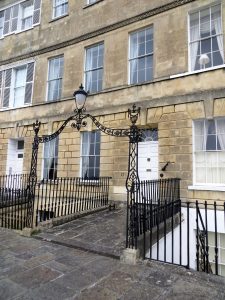 Jane may have taken this very same snicket route up Park St to avoid the crowds, as she loved walking to relax and have time on her own. ‘The pleasure of walking and breathing fresh air is enough for me, and in fine weather, I am out more than half my time’.
Jane may have taken this very same snicket route up Park St to avoid the crowds, as she loved walking to relax and have time on her own. ‘The pleasure of walking and breathing fresh air is enough for me, and in fine weather, I am out more than half my time’.
‘Could it be Mr Elliot? They knew he was to dine in Lansdown Crescent. It was possible that he might stop in his way home, to ask them how he did’. This mention of Lansdown Crescent in Persuasion is a testament to Mr Elliot’s eligibility, as it was a very fashionable street, as we soon discover it still is today.
Beacon Hill
![]() Beacon Hill was a popular spot to view the city from in Jane’s time. She passed this hill on her way to Charlcombe, which is a mile further if you fancy the excursion.
Beacon Hill was a popular spot to view the city from in Jane’s time. She passed this hill on her way to Charlcombe, which is a mile further if you fancy the excursion.
We come down the hill from here along a lovely walkway, almost certainly the route Jane would have taken back into town.
Camden Crescent
Sir Walter Elliot, the snobbish baronet in Persuasion, wanted to avoid the ‘foul air’, ‘paltry rooms’ and ‘confusion’ of the centre, so he took ‘a very good house in Camden-place, a lofty dignified situation, such as becomes a man of consequence. It was to this address that Anne and Captain Wentworth repaired at the end of Persuasion.
We find Camden Crescent to be very lofty and impressive, and the views across Bath are spectacular. Looking south to the other side of the city, we see Beechen Cliff, which is mentioned in Northanger Abbey: ‘They determined on walking round Beechen Cliff, that noble hill, whose beautiful verdure and hanging coppice render it so striking an object from almost every opening in Bath.’
Hedgemead Park
In 1789 a landslide demolished nine houses on the east side of Camden Crescent. This would have been a fairly recent and disturbing memory for the residents of the Crescent in Jane’s time. The remains of the houses were demolished and removed to allow Hedgemead Park to be built, which we walk through next.
St Swithin’s Church
As we look down from Hedgemead Park, we see St Swithin’s Church (Walcot Church), where Jane’s parents were married in 1764, and where George Austen was buried in 1805. We imagine Jane must have come to this church regularly, and in the latter years visited her father’s grave. We read the inscription: ‘Under this stone rest the Remains of the Rev. George Austen, Rector of Steventon und Dean in Hampshire. He departed this life on 21 January 1805. Aged 73 years’.
Sydney Place and Gardens
On our right, we see 4 Sydney Place, where the Austen family lived from 1801-1804. ‘It would be pleasant to be near the Sydney Gardens. We could go into the Labyrinth every day’.
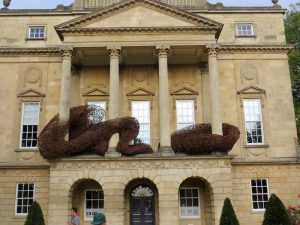 Constructed in the 1790s, as well as housing a labyrinth, Sydney Gardens included a grotto, sham castle and an artificial rural scene with moving figures powered by a clockwork mechanism. The gardens were conceived as an exclusive meeting place for the nobility and gentry, used for promenades and public breakfasts; and naturally, Jane was a regular visitor.
Constructed in the 1790s, as well as housing a labyrinth, Sydney Gardens included a grotto, sham castle and an artificial rural scene with moving figures powered by a clockwork mechanism. The gardens were conceived as an exclusive meeting place for the nobility and gentry, used for promenades and public breakfasts; and naturally, Jane was a regular visitor.
‘There is a public breakfast in Sydney Gardens every morning, so we shall not be wholly starved.’ ‘Yesterday was a busy day with me, or at least with my feet and stockings. I was walking almost all day long; I went to Sydney Gardens soon after one and did not return till four.’
Great Pulteney St and Laura Place
One of the main advantages of life in Bath was that it offered Jane a certain amount of freedom to go out where and when she pleased. Jane’s daily route into town, along Great Pulteney Street, through Laura Place, and along Argyle Buildings to Pulteney Bridge was used in both of the Bath novels. This is the route we take now.
Great Pulteney St is where the Allens in Northanger Abbey settled into comfortable lodgings with Catherine Morland. ‘They passed briskly down Pulteney Street, and through Laura Place, without the exchange of many words. Thorpe talked to his horse, and she meditated, by turns, on broken promises and broken arches, phaetons and false hangings, Tilneys and trap–doors.’
Laura Place was also home to the Elliots’ wealthy cousins in Persuasion. ‘Family connexions were always worth preserving, good company always worth seeking; Lady Dalrymple had taken a house, for three months, in Laura Place, and would be living in style’. ‘They visited in Laura Place, they had the cards of Dowager Viscountess Dalrymple, and the Honourable Miss Carteret, to be arranged wherever they might be most visible: and “Our cousins in Laura Place,”–“Our cousin, Lady Dalrymple and Miss Carteret,” were talked of to everybody.’
The Marketplace
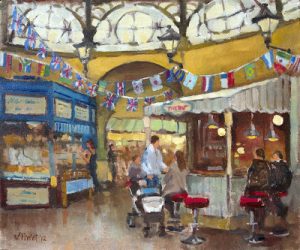 Jane would often wander down to the market for provisions for the day. The market site is still here today, rebuilt in the nineteenth century, but still housing the ‘nail’ with which Jane would have been familiar, a table on which market transactions took place, hence the saying, ‘pay on the nail’.
Jane would often wander down to the market for provisions for the day. The market site is still here today, rebuilt in the nineteenth century, but still housing the ‘nail’ with which Jane would have been familiar, a table on which market transactions took place, hence the saying, ‘pay on the nail’.
North Parade
Sally Lunn’s Bakery at No. 4 was where Jane Austen bought the large, slightly sweet, brioche-style Bath buns that she enjoyed so much, but perhaps she ate too many as she writes of ‘disordering my stomach with Bath bunns’. After a walk, we find they are delicious, providing nourishment and sweetness in equal measure.
The Pump Room
The Grand Pump Room was the epicentre of Bath’s social scene at the start of the nineteenth century. In Jane Austen’s words, ‘Every creature in Bath was to be seen in the room at different periods of the fashionable hours’. On arrival in the city, you were expected to write your name, address and the length of your stay in The Register. Everything ‘Society’ needed to know about you could be gleaned from these inputs, an early version of Facebook really.
‘Every morning brought its regular duties: shops were to be visited; some new part of the town to be looked at: and the Pump-room to be attended, where they paraded up and down for an hour, looking at everybody and speaking to no one.’ Northanger Abbey
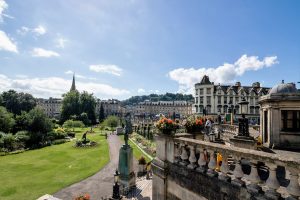 Milsom St
Milsom St
In Persuasion, the Allens loved the convenience of their lodgings in the Edgar Buildings at the top of Milsom St, to this day one of the city’s premier shopping streets: ‘Now, here one can step out of doors and get a thing in five minutes.’ ‘I saw the prettiest hats you can imagine in a shop window in Milson St.’
A contemporary guidebook describes how ‘from the upper part of Milson St through Bond St and Union St, to the Pump Room, now constitutes the midday promenade of the fashionable visitants.’ This was certainly the route followed by Catherine and Isabella in Northanger Abbey, and we have just taken their route home. Ahead of us are a couple of contemporary Catherine & Isabella’s, laden with shopping bags and chatting away.
Milsom St also gets a mention in ‘Persuasion’, where it is an important location for encounters between the characters, the equivalent of the Rovers Return in Coronation St.
‘Walking up Milson St, she had the good fortune to meet with the Admiral. He was standing by himself, at a print shop window….” I can never get by this shop without stopping”.’
There is also a passage in the book set in the fashionable sweetshop Mollands, at No. 2, where Anne and Wentworth meet again in Bath: ‘Anne was sent back, however, in a moment by the entrance of Captain Wentworth himself, among a party of gentlemen and ladies…whom he must have joined a little below Milsom Street. He was more obviously struck and confused by the sight of her than she had ever observed before.’
Assembly Rooms
The Assembly Rooms were built as a place for society to take tea, gossip, play cards and attend concerts and balls.
Jane wrote about the Rooms in Northanger Abbey: ‘Mrs Allen was so long in dressing, that they did not enter the ball-room till late. The season was full, the room crowded, and the two ladies squeezed in as well as they could. As for Mr Allen, he repaired directly to the card-room, and left them to enjoy a mob by themselves.’
Naturally, it’s also a favourite spot for Sir Walter Elliot in Persuasion: ‘Sir Walter, his two daughters, and Mrs Clay, were the earliest of all their party at the rooms in the evening; and as Lady Dalrymple must be waited for, they took their station by one of the fires in the Octagon Room.’ Which is exactly where we pause and have a cup of tea.
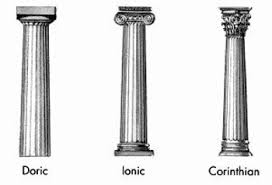 And so we come full Circus and to the end of our walk…
And so we come full Circus and to the end of our walk…
OTHER STUFF
- Read: ‘Jane Austen’s Letters’
- Visit: The Old Theatre Royal, 12 Orchard St, BA1 1JU, much visited by Jane Austen and mentioned in Northanger Abbey, https://oldtheatreroyal.com/
- Visit: The Jane Austen Centre, 40 Gay St, BA1 2NT, https://janeausten.co.uk/
- Attend: The Jane Austen Festival, each September, https://www.janeaustenfestivalbath.co.uk/
- Take a Guided Walk: Dr Moira Rudolf, a walking tour guide who lives for Jane Austen and Georgian Bath. Contact her at moirarudolf@googlemail.com
- Stay: at Paragon Townhouse, https://theparagonbath.co.uk/, next door to where Jane Austen first stayed in Bath in 1797
- Stay: at 4 Sydney Place, where Jane lived from 1801-1804, https://www.bathboutiquestays.co.uk/
- Visit: Charlcombe Church – An ancient church, Henry Fielding married Charlotte Craddock here in 1734. He later modelled the heroines of Tom Jones and of Amelia on her.

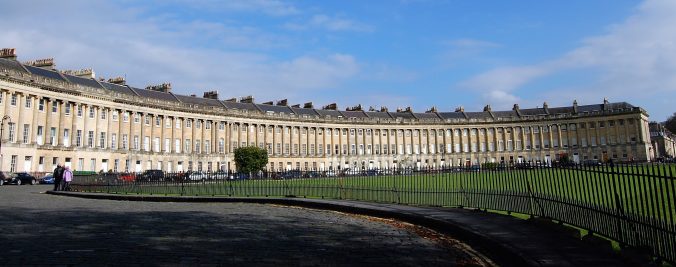
10th May 2022 at 4:56 pm
Why doesn’t this walk go past any of Austen’s know residences?
10th May 2022 at 5:35 pm
It goes past three – 25 gay St, 13 Queen Sq and 4 Sydney Place – hope that helps.